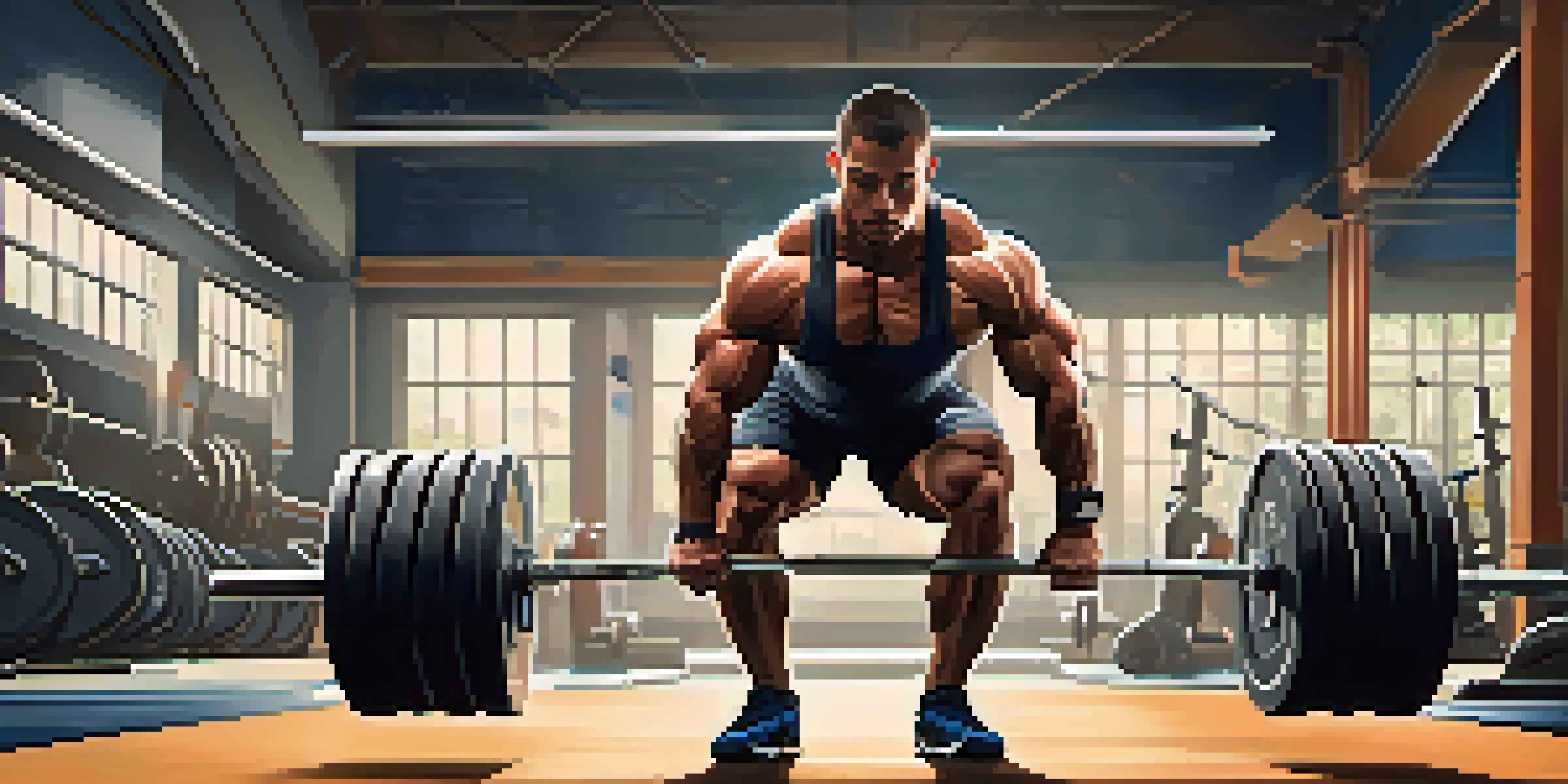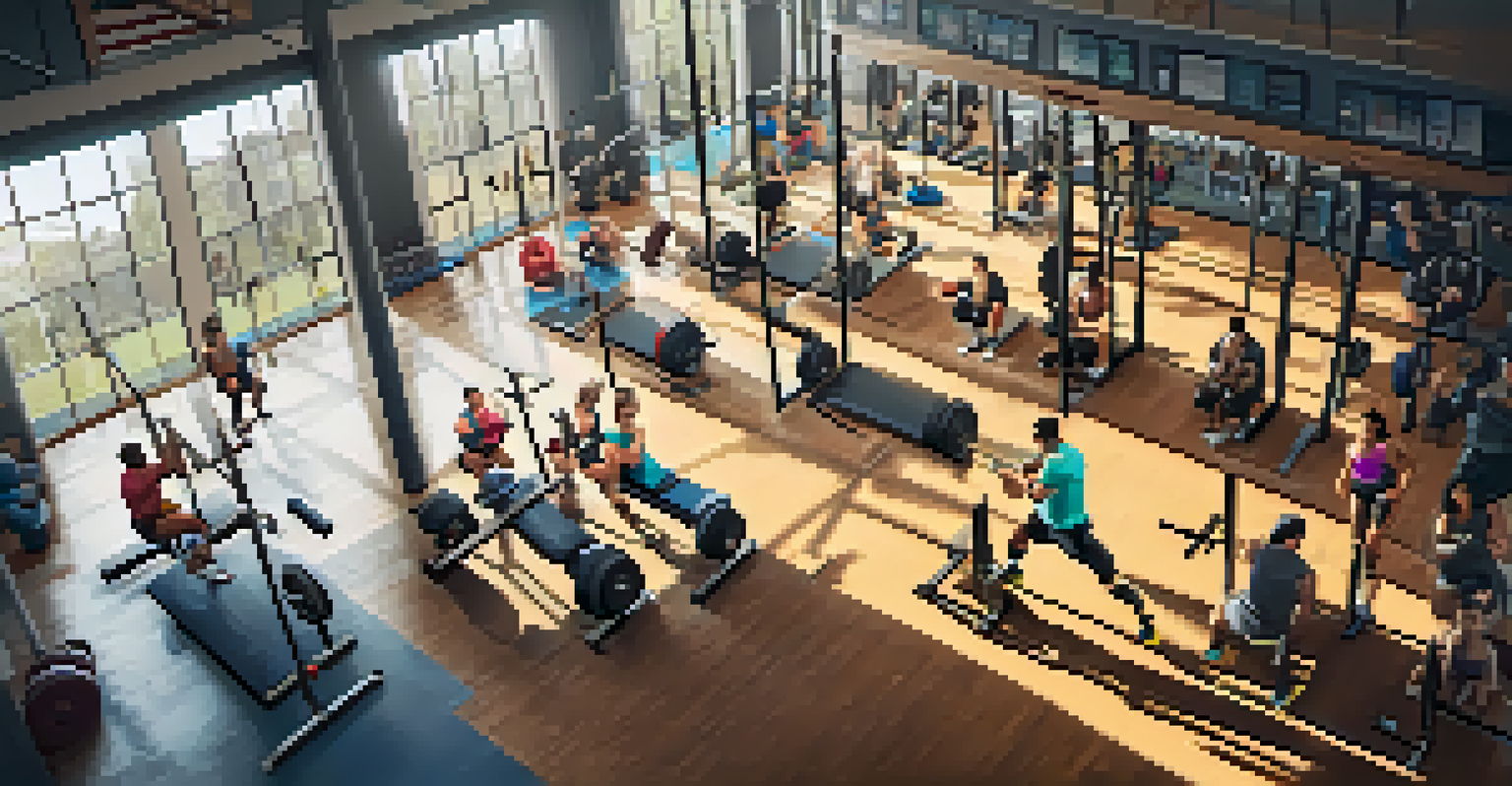Biomechanics: The Science Behind Effective Powerlifting

Understanding Biomechanics in Powerlifting
Biomechanics is the study of how forces interact with the human body. In powerlifting, it helps us understand how to optimize our movements for maximum efficiency and safety. By analyzing our posture, joint angles, and muscle engagement, we can tailor our techniques to lift heavier while minimizing the risk of injury.
Strength does not come from physical capacity. It comes from an indomitable will.
Think of biomechanics as the blueprint for your lifting form. Just as an architect uses precise measurements to create a stable building, powerlifters can use biomechanical principles to build a solid lifting technique. This foundational knowledge allows lifters to perform better and reach their goals more effectively.
In essence, biomechanics provides the tools needed to refine our lifts. Whether you're a seasoned competitor or just starting, understanding these principles can transform your approach to training and competition.
The Role of Leverage in Lifting
Leverage is a crucial concept in biomechanics that affects how we lift weights. It refers to the mechanical advantage gained through the positioning of our bodies in relation to the barbell. By positioning ourselves correctly, we can maximize the force we apply to the weight, making it easier to lift heavier loads.

For example, when performing a squat, a lifter can adjust their stance to optimize their leverage. A wider stance may allow for better torque and stability, enabling them to lift more effectively. Understanding these leverage points can significantly enhance lifting performance.
Biomechanics Enhance Lifting Efficiency
Understanding biomechanics allows powerlifters to optimize their techniques for better performance and reduced injury risk.
Ultimately, mastering leverage can lead to substantial improvements in strength and power. Lifters who grasp this principle often find themselves breaking personal records more frequently.
The Importance of Joint Mechanics
Joint mechanics play a vital role in how we lift weights, impacting everything from our range of motion to our injury risk. Each joint must function optimally to ensure smooth and effective movements during lifts. For instance, the knees, hips, and shoulders all work together in exercises like the deadlift and squat.
The body achieves what the mind believes.
When joints are aligned properly, they can handle heavier loads with less strain. Conversely, poor joint mechanics can lead to imbalances and injuries, making it crucial for lifters to pay attention to how their joints move throughout each lift. This awareness can make all the difference in the long run.
Incorporating mobility and flexibility exercises into your routine can help maintain healthy joint mechanics. Lifters who prioritize joint health often experience better performance and longevity in their powerlifting journey.
Muscle Activation: Getting It Right
Muscle activation refers to how effectively your muscles engage during a lift. Proper activation is key to maximizing strength and power output. For example, in a bench press, ensuring that the chest, triceps, and shoulders are all activated correctly can lead to a more powerful lift.
Lifters often use techniques like visualization and pre-lift activation drills to enhance muscle engagement. This approach not only prepares the body for the lift but also reinforces the mind-muscle connection, which is essential for optimal performance. Think of it as warming up your engine before a race.
Leverage Maximizes Lifting Power
Proper body positioning and leverage can significantly improve the amount of weight a lifter can handle.
Incorporating exercises that target specific muscle groups can also improve activation. By focusing on the muscles that contribute most to your lifts, you can increase your overall strength and efficiency.
The Impact of Body Positioning
Body positioning is crucial in powerlifting, as it can significantly affect your lifting performance. The way you set up for a lift determines how forces are distributed across your body. For instance, a slight lean forward or backward can change the dynamics of a squat or deadlift.
Proper positioning allows for better force transfer and balance, which can enhance lifting efficiency. Just like a skilled archer adjusts their stance for a perfect shot, powerlifters must find their ideal positioning for each lift. This adjustment can drastically improve lifting outcomes.
Experimenting with body positioning during training can help you discover what works best for you. Staying adaptable and open to changes can lead to breakthroughs in your performance.
Injury Prevention Through Biomechanics
Incorporating biomechanics into your training can significantly reduce the risk of injury. By understanding how your body moves and the forces at play, you can make informed choices about your lifting techniques. This knowledge helps identify potential weaknesses or areas of concern before they lead to injuries.
For instance, recognizing when your form begins to break down during a lift can be a game changer. Rather than pushing through pain, you can adjust your technique or reduce the weight to prioritize safety. This proactive approach fosters a healthier lifting environment.
Injury Prevention is Key
Incorporating biomechanics into training helps identify weaknesses, leading to safer lifting practices and improved longevity in the sport.
In essence, biomechanics helps create a safer training regimen. Lifters who prioritize injury prevention often find they can train harder and longer, ultimately achieving their goals more effectively.
The Psychological Aspect of Biomechanics
The psychological aspect of biomechanics is often overlooked but plays a significant role in powerlifting. Understanding the mechanics of your lifts can enhance your confidence and mental focus. When you know your body is capable of executing a lift efficiently, you're more likely to approach it with a positive mindset.
Visualization techniques can also be beneficial. Imagine yourself executing the perfect lift, leveraging your understanding of biomechanics to reinforce your mental preparation. This mental rehearsal can help bridge the gap between theory and practice, making you more resilient during competition.

Ultimately, a strong mental game coupled with biomechanical knowledge empowers lifters to push their limits. The synergy between mind and body is essential for achieving peak performance.
Applying Biomechanics for Lifelong Powerlifting Success
Applying biomechanics to your training can lead to lifelong success in powerlifting. By consistently evaluating and refining your techniques, you can ensure that your lifts remain safe and effective. This ongoing process allows you to adapt to changes in your body and training goals over time.
As you continue to learn and grow, integrating new biomechanical insights into your routine can keep your training fresh and engaging. Staying curious and open to new ideas can inspire creativity in your lifting practices, leading to continuous improvements.
In the end, embracing the science of biomechanics not only enhances your powerlifting skills but also fosters a deeper understanding of your body. This holistic approach sets the stage for a fulfilling and successful powerlifting journey.